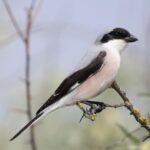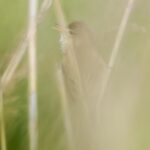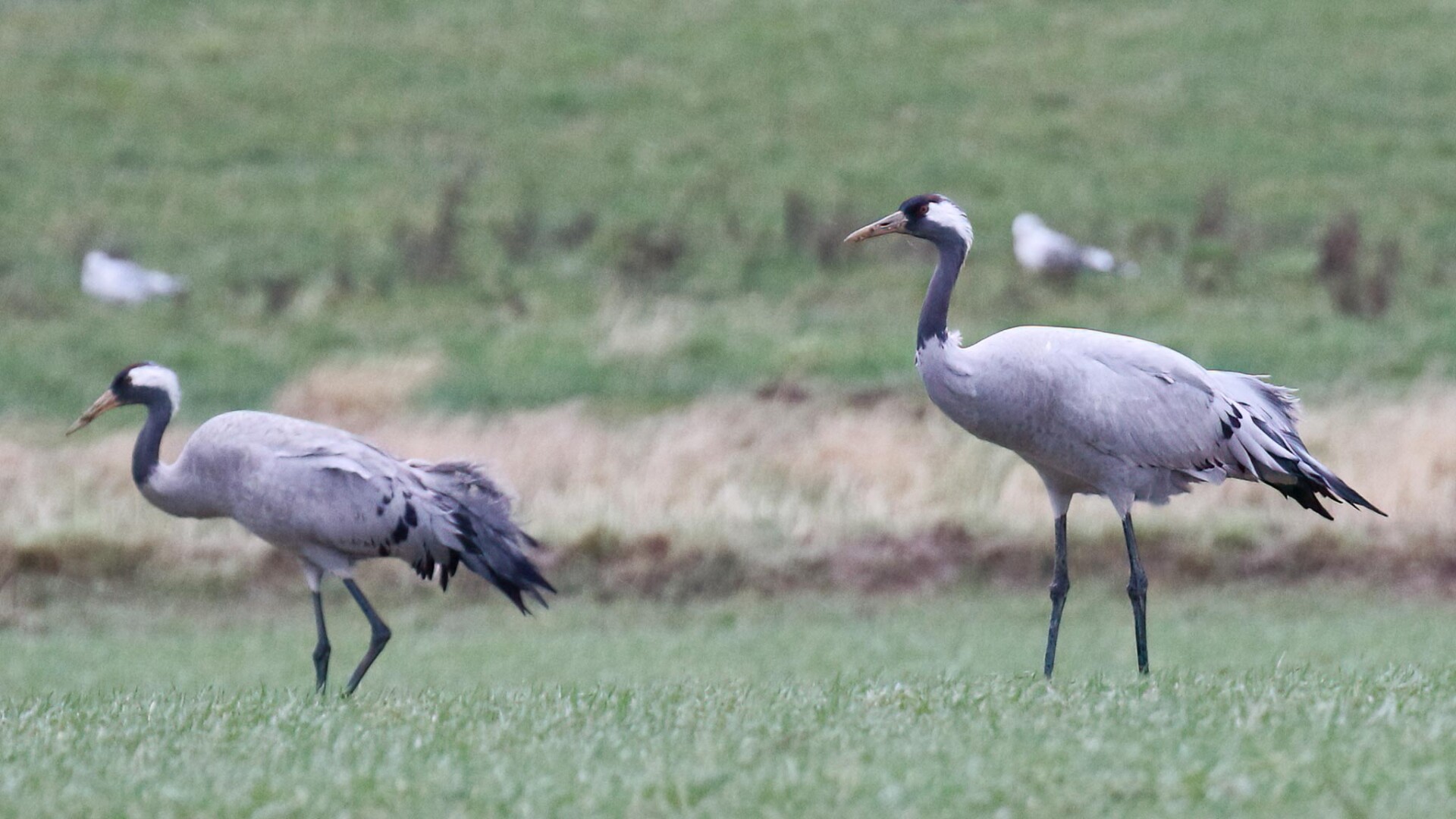A single day Autumn Migration tour in North Norfolk today. It was a bright morning, gradually warming up nicely when the sun came out. After clouding over early afternoon, the rain arrived earlier than forecast. Thankfully it remained light and patchy and it didn’t really stop us enjoying the rest of the day.
Our first destination for the morning was Wells Woods. There had been a huge arrival of migrants from Scandinavia in the last week or so, drifting over the North Sea on easterly winds as they set off south, ultimate destination Africa. A few had lingered and were still hanging around in the last couple of days, so we thought we would head into the Woods to see if we could find some of them still. Though with a clear night last night, and lighter southerly winds, there was no guarantee they wouldn’t have finally departed.
As we drove down Beach Road, lots of House Martins and Swallows were hawking for insects over the harbour wall, feeding up before they leave us. Walking in from the car park, there were several Tufted Ducks and Little Grebes on the boating lake. One of the Little Grebes sounded like it was laughing at us – did it know something we didn’t? A couple of Jays flew in calling and landed in the trees just beyond. We watched one perched in a low hawthorn in the reeds eating blackberries.
Cutting in through the birches, there were very few birds. Where the flycatchers had been yesterday, it was quiet. Perhaps they had cleared out after all? Around the east edge of the Dell, there was also a distinct shortage of birds. It didn’t help that there were patchy clouds obscuring the sun and it felt cool with a fresh breeze.
Back out on the main track, we finally heard a Pied Flycatcher calling and it flew up and landed in the top of a small birch tree. One of the first birds we set eyes on and a Scandinavian migrant, one of the birds we had hoped to find. We could see it flicking its wings as it perched in full view for a minute or so. Then it dropped back down and we lost sight of it. We thought it might have moved on further, but there was no further sign of it the other side of the trees. It had gone quiet now too.
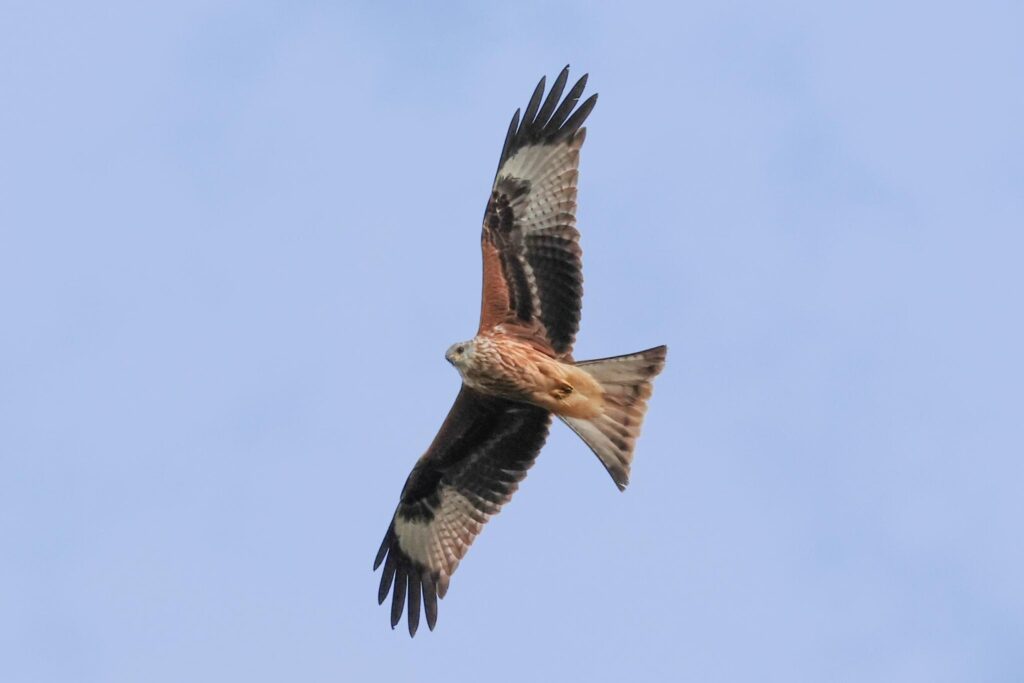
As we walked on, a Red Kite circled slowly over the track. Cutting in through the bushes, we stopped to scan over Quarles Marsh. Several small groups of Pink-footed Geese flew over calling, their delicate yelping calls. They have been arriving in numbers in recent days, back from Iceland for the winter. A distant Marsh Harrier quartered over the marshes, a dark chocolate juvenile. A Muntjac was feeding brazenly on the grass in front.
Moving on round on the path, there was no sign of anything in the bushes today. We cut back out onto the main track and then across and round the west side of the Dell. There were a couple of Chiffchaffs calling in here but they were very hard to see in the birches. Some birds but it still seemed quiet. At least the sun was starting to come out and it was beginning to warm up a little now.
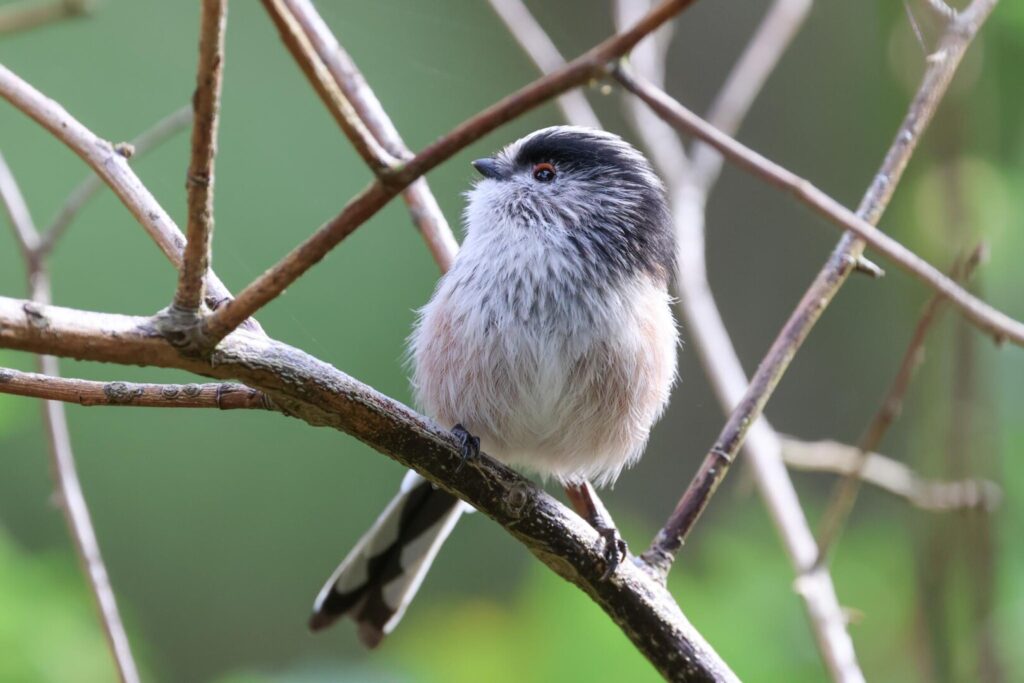
Finally, as we got back round to the NE side of the Dell we could hear Long-tailed Tits calling. We walked into the middle of a mixed flock and now we were surrounded by birds – we didn’t know which way to look. A Goldcrest flew in and landed low in the pine right next to us and a Treecreeper worked its way up the birch trunk in front of us. There were several Chiffchaffs flitting around in the leaves with the tits too.
A Spotted Flycatcher appeared in the same birch and made several darting sallies out after insects, landing back on a branch each time, giving us some nice views. Then a Pied Flycatcher appeared too, a brown and white autumn juvenile, dumpier than the Spotted Flycatcher with bolder white wing bars. It too made several sallies out after insects, allowing us to get a better look at it than the one we had seen more briefly earlier. Both flycatchers lingering Scandinavian migrants.
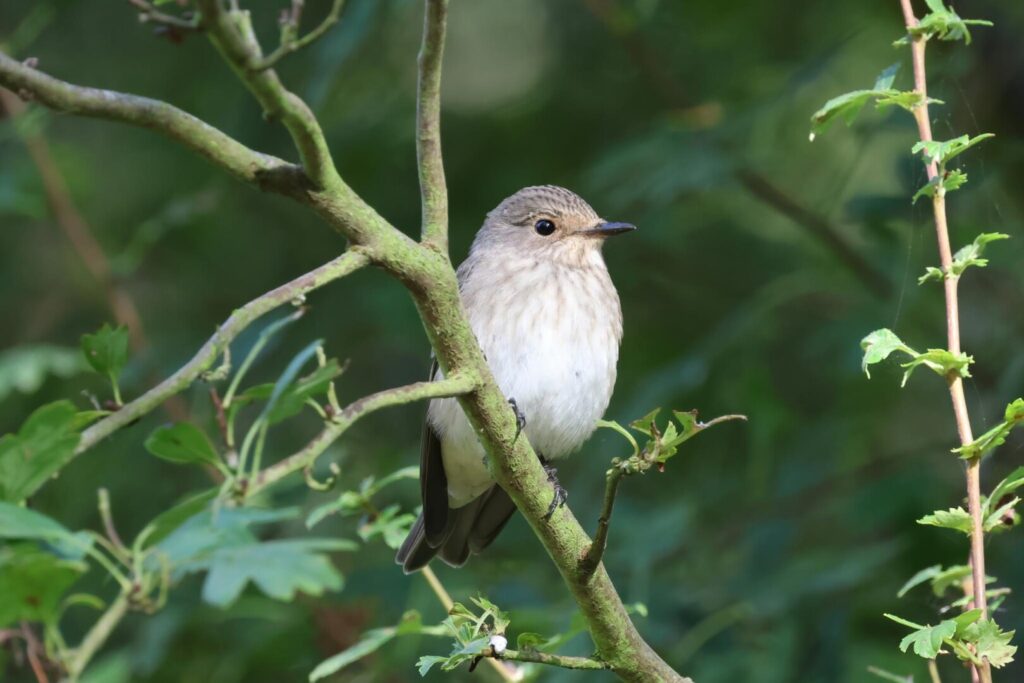
After the tit flock moved off deeper into the Dell, we walked back through the birches. Typically all or nothing in the Woods here – it had gone very quiet again.
We drove round to Holkham Park next. A Black Tern had been found here yesterday, we had seen it yesterday afternoon (on a different Private Tour), and reports came through that it was still present this morning. We parked in the local’s car park and, as we walked down towards the Park gates, a Migrant Hawker dragonfly showed nicely basking on a nearby Holm Oak.
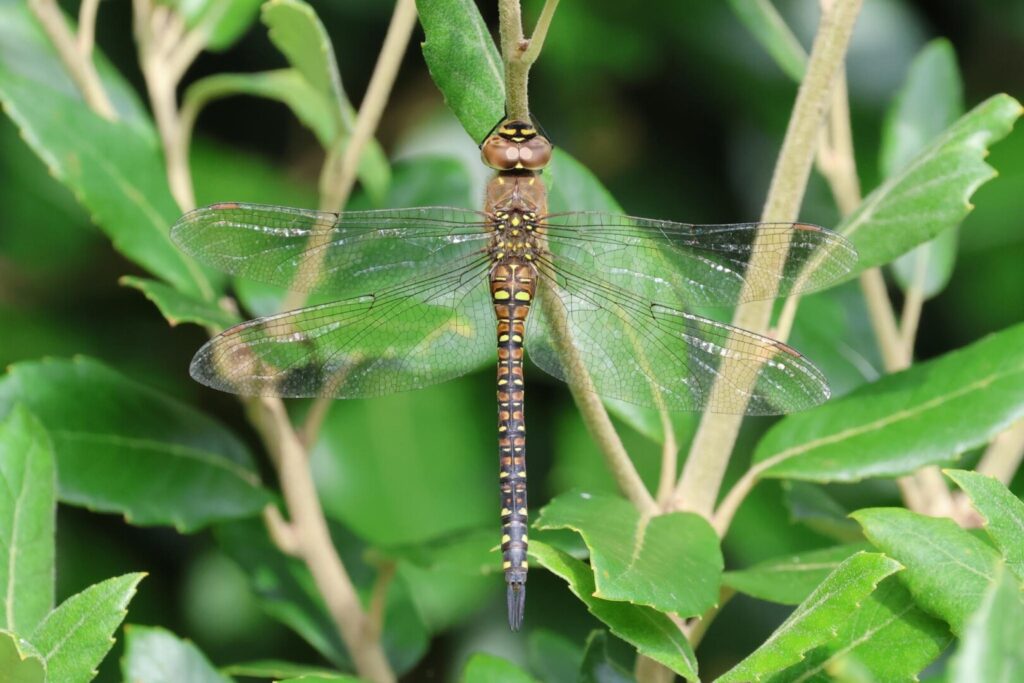
A Great Spotted Woodpecker was on the feeders by the octagonal house briefly, along with a few Great Tits. Down through the trees in the park, there were more Migrant Hawkers and Common Darters zipping back and forth over the track. We stopped briefly to read the plaque on the Monument as we passed.
Walking along beside the lake, a Kingfisher flashed past. There were several Coot and three Great Crested Grebes on the water up towards the north end and we could see the Black Tern hawking over the lake down towards the south end. Down past the island, we a good view of the Black Tern now. A juvenile, we could see the distinctive dark spur on the side of its breast. It was very active, hawking round and round over the water, occasionally dipping down to the surface after insects.
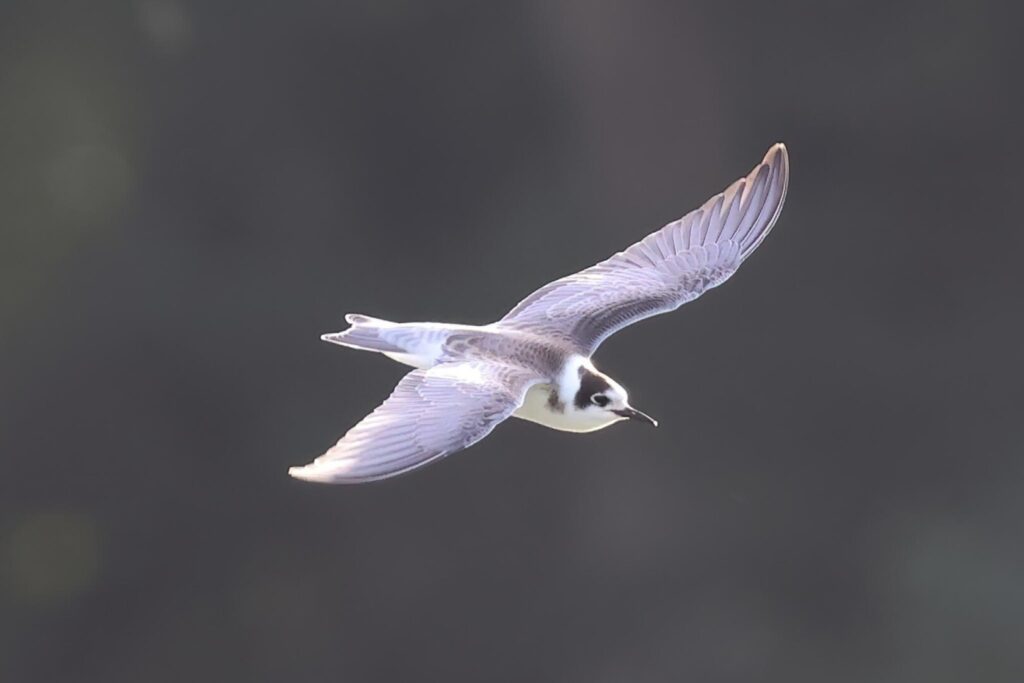
Black Terns once bred in the UK, before the draining of the Fens. They still breed as close as Belgium and the Netherlands. Now they are occasional visitors here, in spring and autumn. This one had probably drifted across the North Sea on the recent east winds and was taking advantage of the lake to refuel before heading on down to Africa for the winter.
Several Egyptian Geese and feral Barnacle Geese were feeding on the grass opposite. A Grey Heron was lurking in the rushes on the far bank. There were lots of Shoveler, the drakes all in drab eclipse plumage, and a few Gadwall out on the lake. Several House Martins and Swallows were catching insects out over the water too.
Walking back through the trees, we heard a couple of Nuthatches calling in the tops of the oaks but couldn’t see one. Then we found one on the feeders by the octagonal house. We drove over to Titchwell next and when we arrived there it was time for lunch.
It was bright and sunny while we ate our lunch in the picnic area, but as we walked out onto the reserve afterwards we could see ominous dark clouds to the north already. It quickly clouded over. As we passed the reedbed, there were several Coot in the first channel and Greylags and Gadwall on the main pool. A Common Snipe flew up out of the reeds, straight past us and over the bank.
A Curlew walked through the grass out on the saltmarsh the other side and a male Marsh Harrier quartered away in the distance. We could see a Spoonbill way off towards Thornham harbour but with some heat haze still it was too far to make out any detail. One of the group spotted a Lesser Marsh Grasshopper in the grass on the bank.
Scanning the Freshmarsh from the bank before Island Hide, we could see a Spoonbill now standing out in the water, preening. A Great Spotted Woodpecker flew across and landed in the sallows by the hide – unusual to see one out here, so possibly a bird dispersing along the coast. A couple of Reed Buntings flew in too.
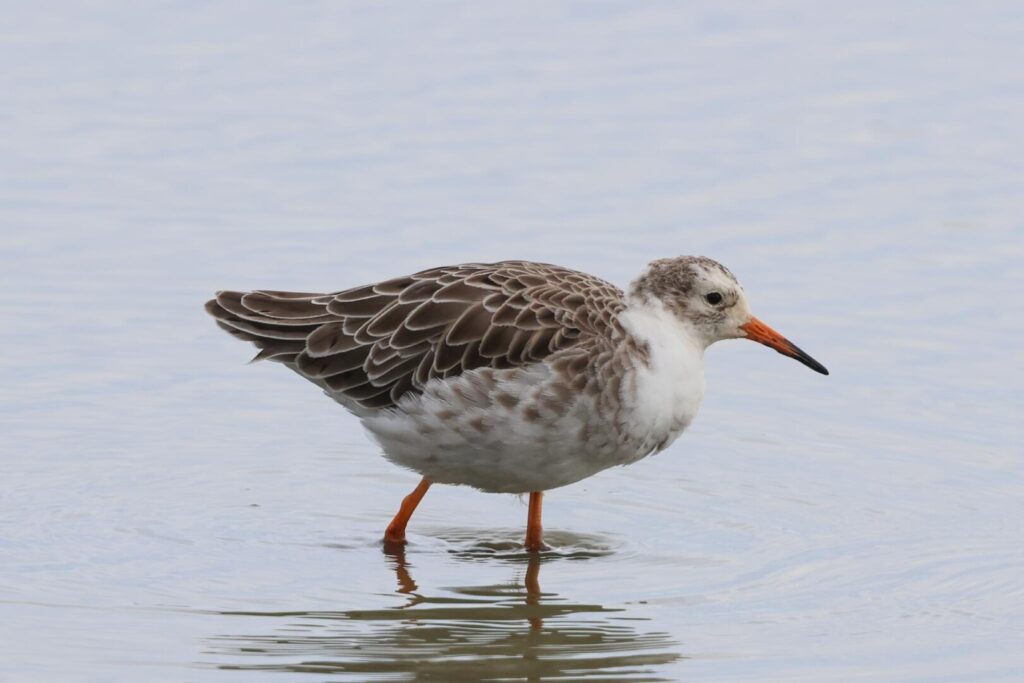
When we got into the hide, the Spoonbill had gone. There were lots of Ruff and Dunlin feeding on the mud close in front, giving us some very nice views. A Common Snipe appeared from behind the first island and a flock of Black-tailed Godwits were mostly asleep further back. Two Great White Egrets chased round over the reedbed.
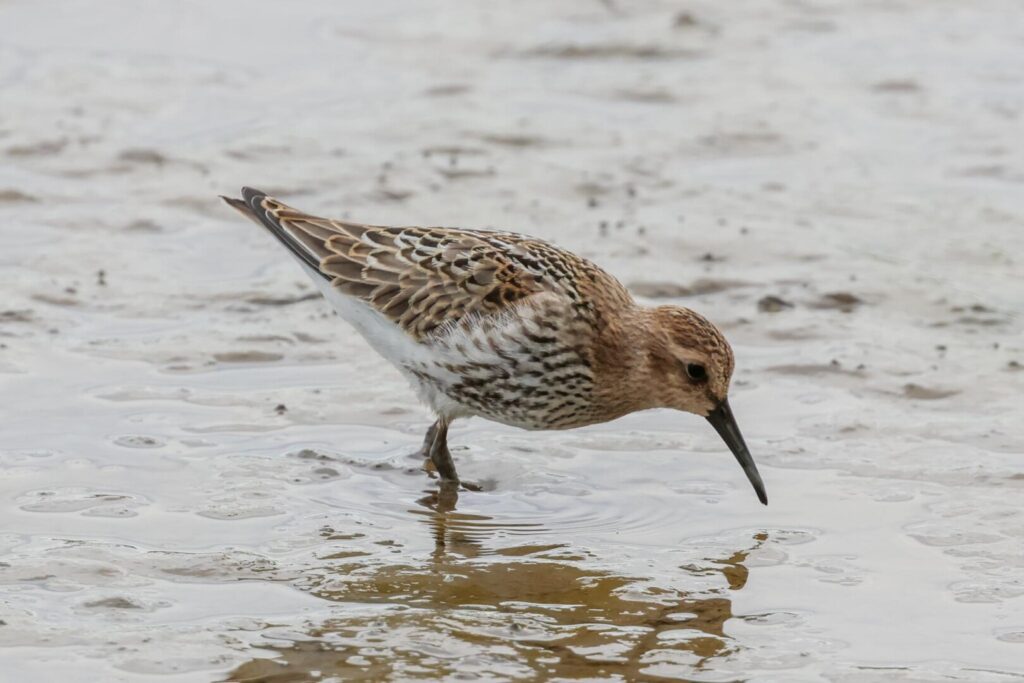
As we got back out onto the main path, we heard a Bearded Tit calling and looked over just in time to see it fly across and drop into the reeds just before the hide. A large flock of Linnets flew in and landed on the mud the other side of the hide.
It had not been forecast to rain until 4pm, but it looked like it might be coming in early. We decided to head straight out to the beach, hoping to beat the rain. We stopped briefly by Volunteer Marsh, where several more Curlews, Black-tailed Godwits, Redshanks and three more Dunlin were feeding in the mud in the channel.
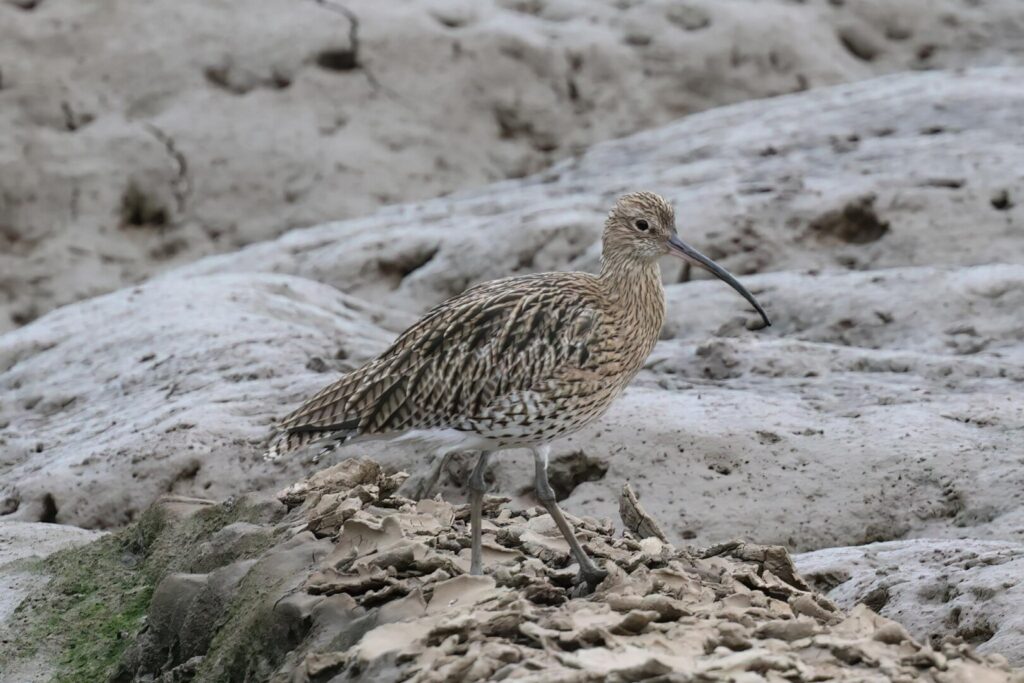
On the Tidal Pool, three Ringed Plovers were on one of the sandy islands at the back. There were more Black-tailed Godwits and Redshanks. A large flock of Oystercatchers was already roosting out in the samphire, with a few Turnstones feeding nearby. Despite the cloud now, there were still several Sea Aster Bees buzzing around the entrances to their burrows in the bank.
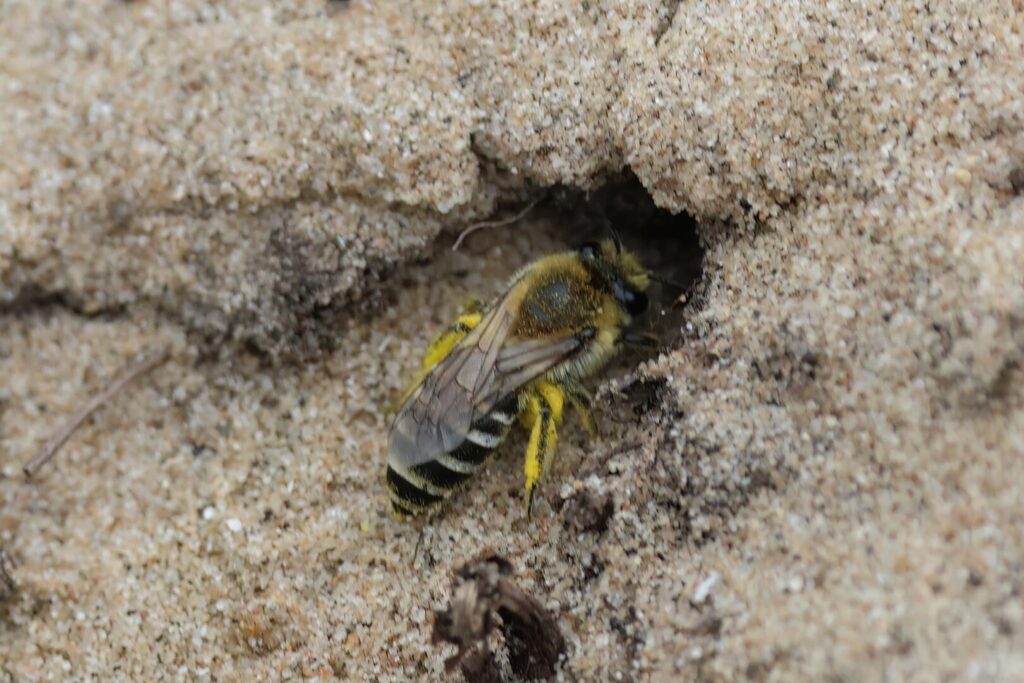
Out at the beach, the tide was already coming in and the mussel beds were already covered. There were lots of silvery-grey Sanderling running around on the shore and we had a nice look through the scope at a couple of Bar-tailed Godwits on the edge of water. A single Great Crested Grebe was on the sea, some way off towards Brancaster and four Sandwich Terns flew past.
We had probably already pushed our luck, so it was no surprise that it began spitting with rain as we started to walk back. It seemed to be getting a little harder as we cut in along the path to Parrinder Hide.
There was a lovely close Common Snipe right in front of the hide which posed nicely. Two Golden Plovers were on one of the islands further back, one still with a black belly. The presumed escaped Black-winged Stilt (with a closed aviculturalist-type ring) appeared after a while on the edge over in the far corner.
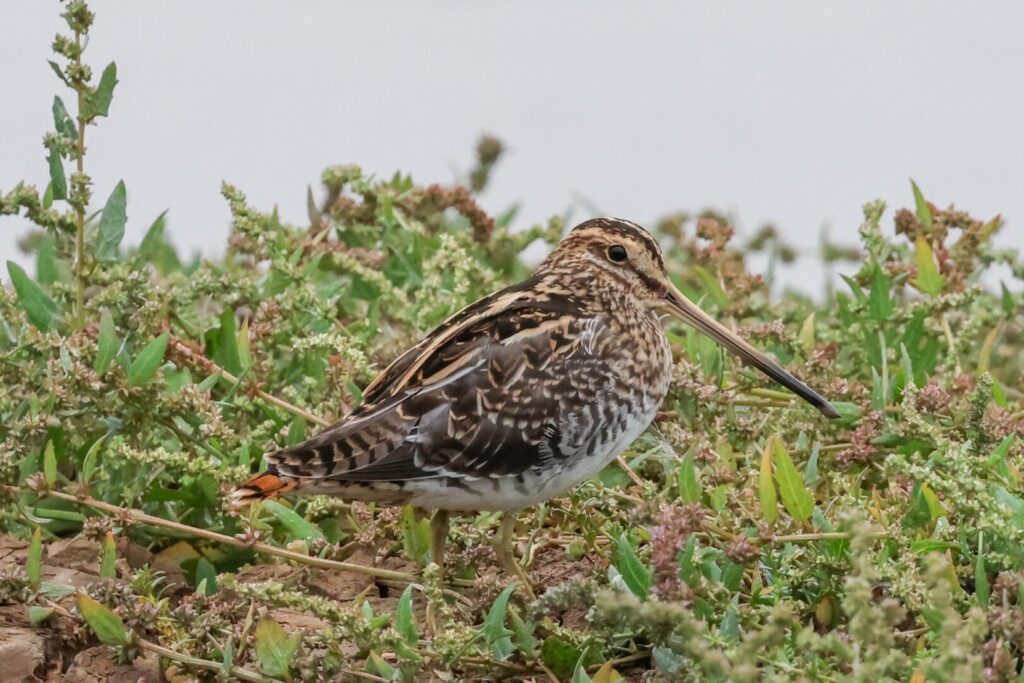
There were three Pink-footed Geese asleep in with the Greylags towards the back, possibly fresh arrivals having a rest after their long journey. A Canada Goose x Greylag hybrid was with the Greylags on one of the closer islands. There were several Wigeon feeding on the grass, the drakes in their rusty eclipse plumage, and lots of brown Teal.
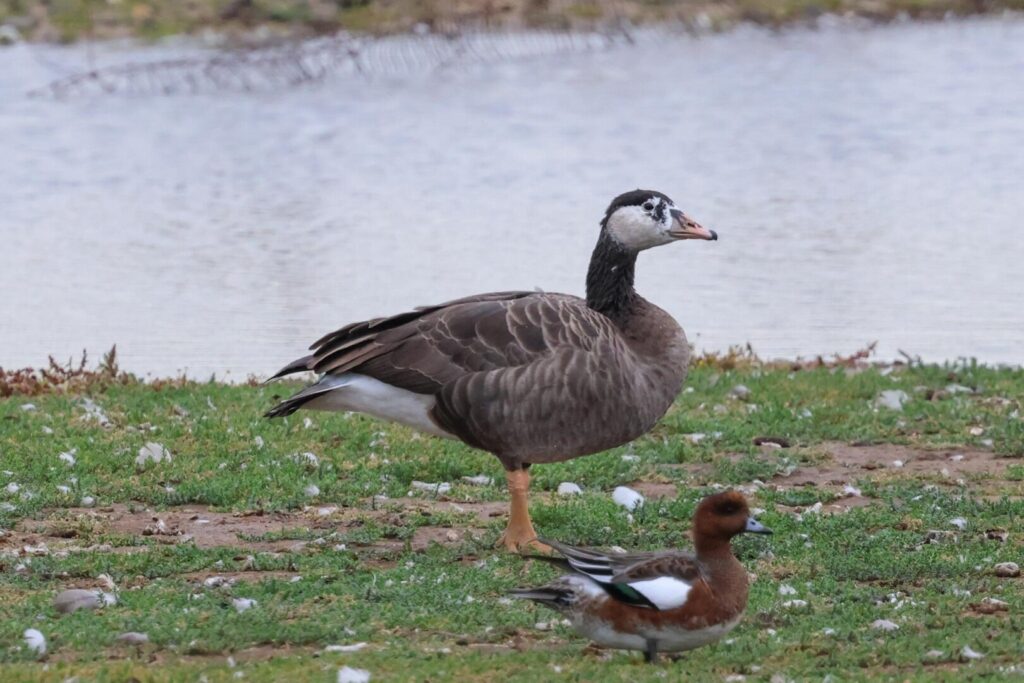
The rain had quickly eased and it was back to just spitting now. As we walked back, several Bearded Tits were calling now by Island Hide, but keeping well hidden.
We had time for one last stop on our way back. We called in at Holkham, and stopped to scan the cows out on the grazing marshes by Lady Anne’s Drive. It has been an exceptional year for Cattle Egrets here this year, with some large flocks in recent weeks. There were only two Cattle Egrets feeding around the cows now, one adult and one very fresh juvenile still with a black bill.
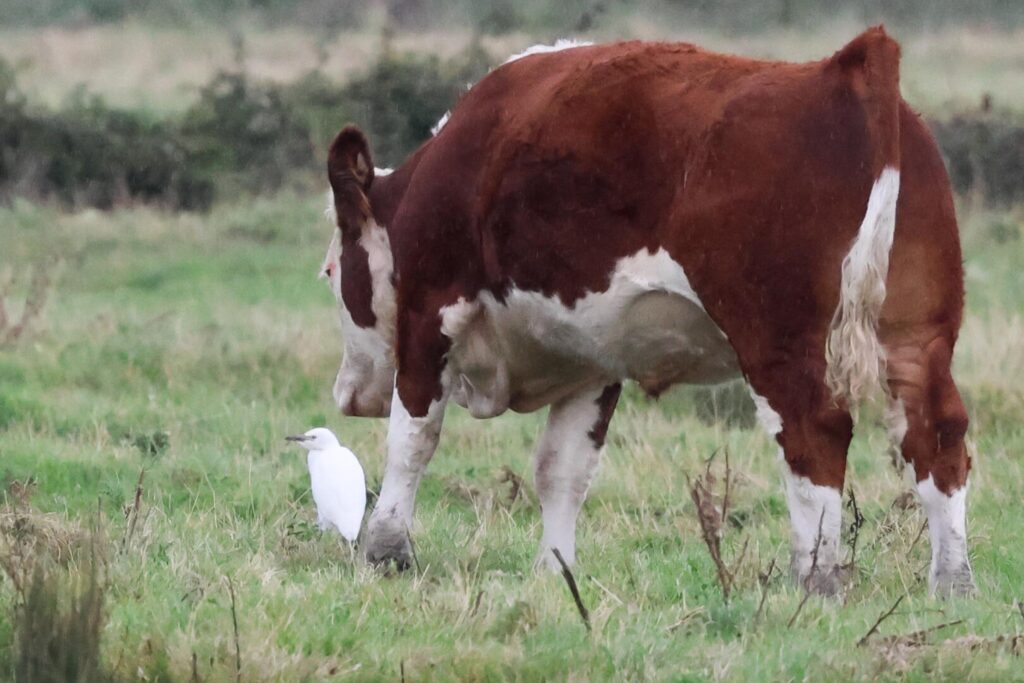
There were lots of Pink-footed Geese in the fields further over. We could hear there yelping calls and see their heads sticking out of the grass. A succession of small groups flew up and heading off inland. It may be autumn now, but a reminder that winter is just around the corner – and a nice way to end the day.
If you would like to join us on one of our forthcoming tours, you can see what we have planned on our Tours page here.
